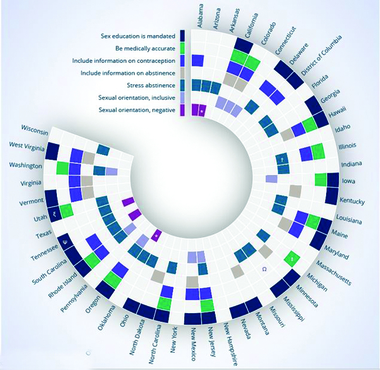How sex education is failing

by Angelica Mann
Op-Ed
“We’re neglecting the queer community, and they deserve inclusive and comprehensive sex education just like anyone else,” said Kevin Miller, a high school senior from Pennsylvania.
Miller operates the non-profit, Keystone Coalition for Advancing Sex Education (CASE) which introduced the Pennsylvania Healthy Youth Act. The Act requires schools to provide instruction on sexual orientation, contraception, intimate partner violence and sexual harassment.
Pennsylvania’s sex education guidelines do not require schools to teach anything other than HIV/AIDS and other communicable diseases.
Similarly, in Oklahoma sex education is not mandatory. If it is taught at all in this state, it is not required to be medically accurate or to include information on contraception or abstinence. State-mandated HIV/AIDS education in Oklahoma stresses that homosexual activity is primarily responsible for contact with HIV.
According to the Guttmacher Institute, Oklahoma and 20 other states do not require comprehensive sex education teaching in schools, and a total of 37 states do not require comprehensive sex education to be LGBT+ inclusive; 21 of those do not require sex education teaching at all.
When it comes to teen birth rates, Oklahoma comes in second alongside Texas, Mississippi and New Mexico, with Arkansas having the leading number of teen pregnancies (ReasearchGate, 2008).
Abstinence-only and abstinence-based programs are failing, and it is a health crisis. Politicians and parents are reluctant to get behind comprehensive and inclusive sex education programs with the idea it will lead to more young people being sexually active, which can be proven false by the high statistics of teen pregnancies and STD’s.
Oklahoma ranks 10th in the nation for STD rates among teens. At some point, young people are going to find ways to explore their curiosity about their sexuality, whether parents and politicians want them to or not.
Comprehensive and all-inclusive sex education in schools will help to lower risk factors such as STD’s and unwanted pregnancies among teens; this is a straightforward concept. Teens need to be educated about their bodies and sexuality to live healthy lives. If we limit access to this information, we are possibly limiting their potential in life.
So, what exactly does LGBT+ sex education look like today? GLSEN perfectly laid out four wrong ways schools approach LGBT+ inclusive sex education and the one correct way to approach the subject in school classrooms.
The ‘wrong’ ways included popular approaches to the situation such as: ignoring the subject altogether, demonizing, stigmatizing and LGB inclusive but transgender excluding.
With the correct approach being completely and truthfully LGBT+ inclusive, this would potentially infuse LGBT+ people and issues relevant to them throughout the whole curriculum, paying attention to information regarding non-cisgender, non-heterosexual relationships and experiences. LGBT+ issues would no longer be labeled as “special topics” but would be covered equally.
The positive outcomes of comprehensive and inclusive sex education are evident in schools across the country. Washington state passed the Healthy Youth Act in 2007, followed by a similar 2007 law in Iowa, a 2013 law update in Colorado, and California’s own Healthy Youth Act in 2015.
California’s law was the first in the country to require sex education to cover sexual orientation, gender identity, and information on abortion, sexual assault and sexual harassment.
The 2015 GLSEN School Climate Survey showed a link between schools with inclusive education and a healthier student environment, with students being less likely to miss school, less likely to say they might not graduate and more likely to say their peers and teachers were supportive of their identity.
Countless years of statistics have shown past, and current programs are failing our students. It is clear we still need to continue reforming and updating these programs, assuring the education provided reflects its student body. While it is only the beginning, we already see the benefits of inclusive and comprehensive sex education.
The Gayly. May 4, 2018. 10:20 p.m. CST.





